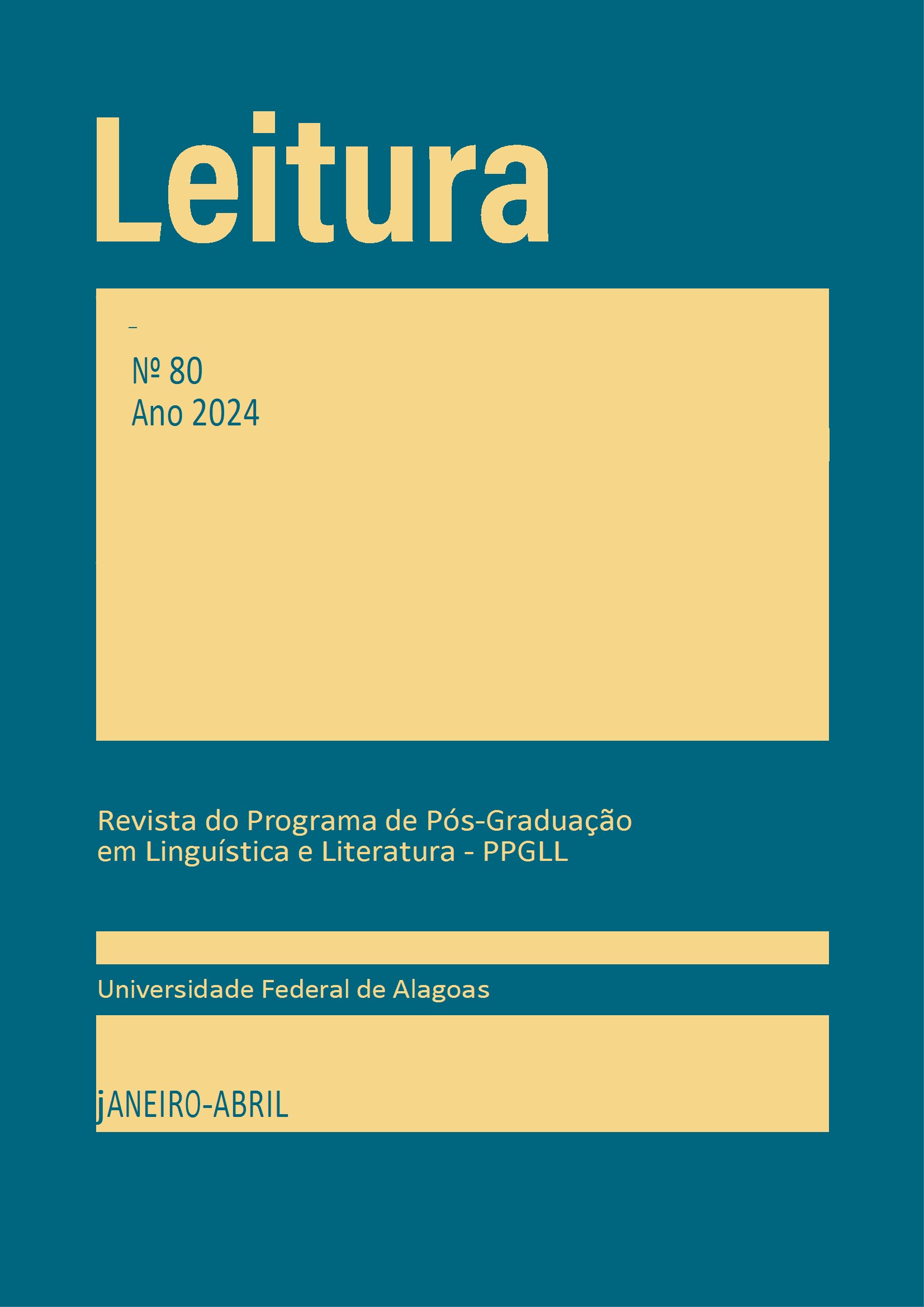Não-binariedade de gênero e marcação de gênero neutro de acordo com a mídia jornalística: a construção de sentido em diálogo com as noções de crença e preconceito linguístico
DOI:
https://doi.org/10.28998/2317-9945.202480.111-124Abstract
The main purpose of this research is to investigate how is addressed in the media the use of gender-neutral markings, considering the vowel -e and the change of pronouns to refer to a third gender. To this end, a journalistic article reported in 2019 by the news program Café com Jornal, from Rede Bandeirantes, was selected for analysis, which addresses the singular they inclusion in the Merriam-Webster dictionary and covers alternatives for gender neutralization in Portuguese. The studies of Patrick Charaudeau (2013) are taken as a theoretical basis, regarding the processes of construction of meaning, in dialogue with Marcos Bagno (1999) about what is understood by linguistic prejudice, considering, additionally, discursive nature aspects, especially coming from the Dialogic Theory of Discourse. From the analysis conducted, it is clear that the process of transformation of the reported fact occurs with the support of knowledge associated with beliefs, which involve an idealized notion of language. It is considered that the analyzed processes of construction of meaning are likely to have an effect of truth on the viewer, which can contribute to the dissemination of ideological positions that encourage prejudice and discrimination towards people with non-binary identities.
Downloads
References
BAGNO, Marcos. Preconceito Linguístico: o que é, como se faz. São Paulo: Loyola, 1999.
BAGNO, Marcos; RANGEL, Egon de Oliveira. Tarefas da educação linguística no Brasil. Revista Brasileira de Linguística Aplicada, v. 5, n. 1, p. 63-81, 2005.
BAKHTIN, Mikhail. Teoria do Romance I: a estilística. São Paulo: Editora 34, 2015.
BAKHTIN, Mikhail; VOLOCHÍNOV, Valentin. Marxismo e filosofia da linguagem. São Paulo: Hucitec, 2009.
BALDEZ, Diovana da Silveira. O uso da marcação de gênero neutro no Twitter por uma perspectiva sociolinguística. 2022. Dissertação (Mestrado em Letras - Linguística) - Programa de Pós-Graduação em Letras, Escola de Humanidades, Pontifícia Universidade Católica do Rio Grande do Sul, Porto Alegre, 2022.
BARBOSA FILHO, Fábio Ramos. Projetos de lei contrários à linguagem neutra no Brasil. In: BARBOSA FILHO, Fábio Ramos; OTHERO, Gabriel de Ávila (org.). Linguagem “neutra”: língua e gênero em debate. São Paulo: Parábola, 2022.
CAMARA JR., Joaquim Mattoso. Estrutura da língua portuguesa. 36. ed. Petrópolis: Vozes, 1970.
CHARAUDEAU, Patrick. Discurso nas Mídias. São Paulo: Contexto, 2013.
CORWIN, Anna. Language and gender variance: Constructing gender beyond the male/female binary. Electronic Journal of Human Sexuality, v. 12, 2009. Disponível em: http://www.ejhs.org/Volume12/Gender.htm. Acesso em: 29 set. 2023.
DICIONÁRIO adota pronome para pessoas Não-Binárias. São Paulo: Grupo Bandeirantes, 2019. 1 vídeo (6 min 42 seg). Publicado por Band Jornalismo. Disponível em: https://www.youtube.com/watch?v=imQoEM0Y9wE&ab. Acesso em: 29 set. 2023.
FARACO, Carlos Alberto; ZILLES, Ana Maria Stahl. Pedagogia da Variação Linguística: Introdução. In: FARACO, Carlos Alberto; ZILLES, Ana Maria Stahl (org.). Pedagogia da Variação Linguística: língua, diversidade e ensino. São Paulo: Parábola, 2015.
MÄDER, Guilherme Ribeiro Colaço. Masculino genérico e sexismo gramatical. 2015. Dissertação (Mestrado em Linguística) - Programa de Pós-Graduação em Linguística, Universidade Federal de Santa Catarina, Florianópolis, 2015.
REIS, Neilton dos; PINHO, Raquel. Gêneros não-binários: Identidades, expressões e Educação. Reflexão e Ação, v. 24, n. 1, p. 7-25, 2016.
SCHWINDT, Luiz Carlos. Predizibilidade da marcação de gênero em substantivos no português brasileiro. In: CARVALHO, Danniel; BRITO, Dorothy (org.). Gênero e língua(gem): formas e usos. Salvador: Editora da Universidade Federal da Bahia, 2020a.
SCHWINDT, Luiz Carlos. Sobre gênero neutro em português brasileiro e os limites do sistema linguístico. Revista da ABRALIN, v. 19, n. 1, p. 1-23, 2020b.
VISCARDI, Janaisa. Língua para todes: um ensaio sobre o gênero neutro. Revista Marie Claire, São Paulo, 8 dez. 2020. Disponível em: https://revistamarieclaire.globo.com/amp/Comportamento/noticia/2020/12/lingua-para-
todes-um-ensaio-sobre-o-genero-neutro.html. Acesso em: 29 set. 2023.
WEST, Candace; ZIMMERMAN, Don. Doing Gender. Gender and Society, v. 1, n. 2, p. 125-151, 1987. Disponível em: http://www.jstor.org/stable/189945. Acesso em: 29 set. 2023.










